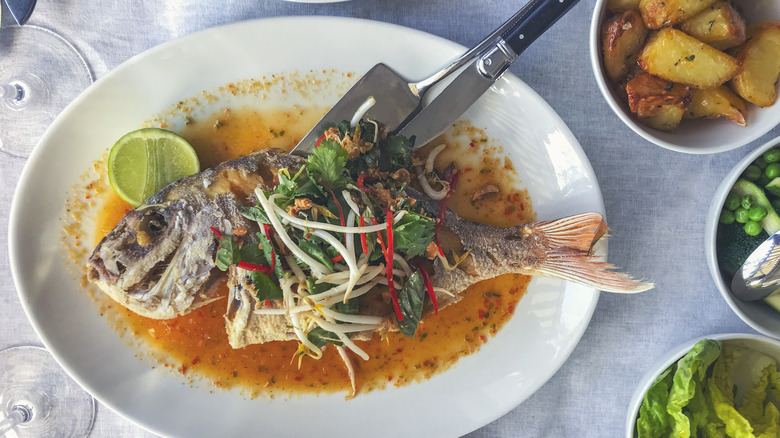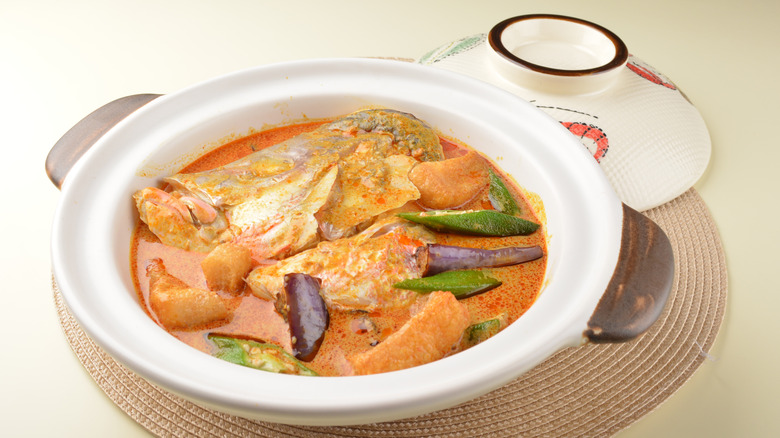When Prepping Whole Fresh Fish, Don't Throw Away The Head
Most of us are happy to eat fish when it's been grilled or baked, cut into chunks and served in a soup or stew, battered and deep-fried, and even as raw bites served on top of sushi. Though few of us are as willing to cut into a whole fish, particularly with its head intact. However, there are a number of reasons why they deserve to be saved and served at your next meal.
The Food and Agriculture Organization of the United Nations points out that the heads of species like sardines and anchovies are rich in nutrients including vitamins and minerals like calcium, iron, and iodine. The organization also says that fish heads can contain as much as 70% of the entire fish. This means most of the fish is actually wasted when its head is discarded. Aside from its health benefits, fish heads also contain more omega-three fatty acids than their fillets, which gives them more rich, umami flavor.
How other cultures cook with fish heads
While American cooks aren't likely to get too excited about fish heads, that's not the case with their counterparts in Asia and parts of Europe, since fish heads in those places are treated as a delicacy. They may be boney, but there is plenty of meat tucked away in its cheeks, on its forehead, and in its collar which is located behind its clavicle and behind its gills. This part of the fish is succulent and because it is so delectable, grilled fish collar is a favorite in Japanese and Filipino restaurants.
However, fish heads aren't just prized for their meaty collars. In South Asia and South East Asia, entire heads can be prepared with a varying collection of spices that include ginger, coriander, chili, garlic, cumin, turmeric, and tamarind to make a mouthwatering curry. In New Zealand, fish heads can also be seasoned with salt, pepper, and olive oil, then wrapped in foil with lemon and red onion before being baked. If you're feeling inspired to try it out for yourself, some of the best fish heads to cook with include salmon, cod, seabass, grouper, and snapper.

